Vermont Infrastructure Shows Improvement in New Report Card
October 17th, 2014 | By: Infrastructure Report Card
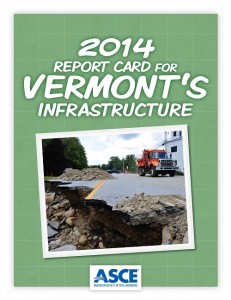 The latest Report Card for Vermont’s Infrastructure showed a slight improvement in their overall GPA to a “C.” The 2014 Report Card for Vermont’s Infrastructure is an update from 2011, when the state received a “C-” cumulative grade. The Report Card assessed bridges (C), dams (C), drinking water (C-), wastewater (D), roads (C-), and solid waste (C+).
After Tropical Storm Irene damaged the state’s infrastructure backbone in 2011, Vermont made significant investments through catch-up and emergency funding. In addition, the state’s most recent transportation funding package provided close to $700 million for transportation infrastructure, the largest transportation infrastructure investment in state history. There have also been programmatic changes. Road fatalities have been cut nearly in half since 2006 due to changes made using the Strategic Highway Safety Plan.
Led by Amanda Hanaway-Corrente, P.E. who chaired the effort and Vermont Section President-Elect Jessica Clark Louisos, P.E., the Report Card was released at a luncheon in Montpelier, which included a keynote from Sue Minter, deputy secretary at the Vermont Agency of Transportation (VTRANS) and David Mears, commissioner of the Department of Environmental Conservation.
“Vermont is poised to grow our economy as we continue to make investments into our infrastructure. The transportation funding that was signed into law in June is one example of how the state continues to focus on innovation and jobs,” said Minter.
Media coverage of the event included the Burlington Free Press and WCAX.
Read the full Vermont Report Card
The latest Report Card for Vermont’s Infrastructure showed a slight improvement in their overall GPA to a “C.” The 2014 Report Card for Vermont’s Infrastructure is an update from 2011, when the state received a “C-” cumulative grade. The Report Card assessed bridges (C), dams (C), drinking water (C-), wastewater (D), roads (C-), and solid waste (C+).
After Tropical Storm Irene damaged the state’s infrastructure backbone in 2011, Vermont made significant investments through catch-up and emergency funding. In addition, the state’s most recent transportation funding package provided close to $700 million for transportation infrastructure, the largest transportation infrastructure investment in state history. There have also been programmatic changes. Road fatalities have been cut nearly in half since 2006 due to changes made using the Strategic Highway Safety Plan.
Led by Amanda Hanaway-Corrente, P.E. who chaired the effort and Vermont Section President-Elect Jessica Clark Louisos, P.E., the Report Card was released at a luncheon in Montpelier, which included a keynote from Sue Minter, deputy secretary at the Vermont Agency of Transportation (VTRANS) and David Mears, commissioner of the Department of Environmental Conservation.
“Vermont is poised to grow our economy as we continue to make investments into our infrastructure. The transportation funding that was signed into law in June is one example of how the state continues to focus on innovation and jobs,” said Minter.
Media coverage of the event included the Burlington Free Press and WCAX.
Read the full Vermont Report Card
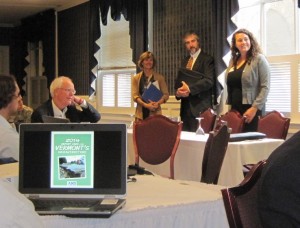
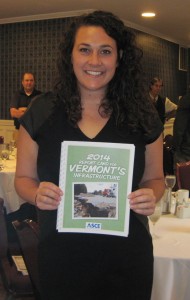
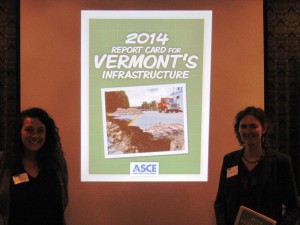
Tags: bridges, dams, grade, infrastructure, report card, roads, transportation, Vermont, wastewater, water
No Comments »
21-Year-Old Gas Tax Rate Still Holding Up America’s Roads & Bridges
October 1st, 2014 | By: Becky Moylan
The following is a statement from Randall (Randy) S. Over, P.E., F.ASCE, president of the American Society of Civil Engineers (ASCE), regarding the 21st anniversary of the last federal gas tax increase: “Today the federal gas tax’s 18.4-cent rate turns 21. While this is a rite of passage for American college students, this milestone is a sad reflection on Congressional inaction when it comes to our transportation system. According to the Consumer Price Index many household prices have nearly doubled in the past 21 years.- A loaf of bread cost: 1993: $0.75, 2014: $1.39.
- A pound of coffee: 1993: $2.50, 2014: $5.16.
Tags: bridges, gas tax, highway trust fund, roads, transit
No Comments »
Humboldt County California's Transportation Report Card Released
September 8th, 2014 | By: Infrastructure Report Card
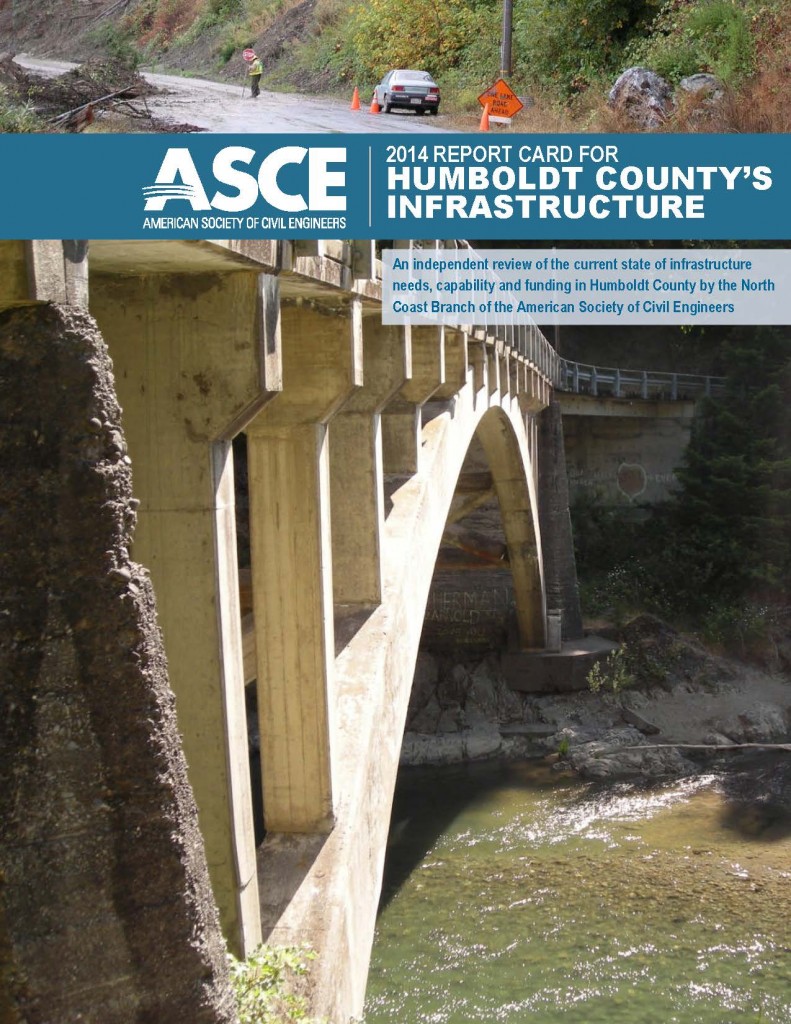 This afternoon the 2014 Report Card for Humboldt County’s Infrastructure, an independent review of the area’s transportation needs, was released by the North Coast Branch of the American Society of Civil Engineers. The Report Card gave the County’s roads a grade of D+ grade and bridges received a grade of C-.
According to the new report, Humboldt County’s locally owned roads and bridges need five times the current investment simply to maintain their current condition.
“The grades are disappointing, but not surprising to Humboldt County’s citizens who drive these roads and bridges,” said Yoash Tilles, president, ASCE North Coast Branch. “This impacts our community’s economy, safety and daily life. It is time to make the investment to improve our transportation infrastructure.”
Among the key findings of the report:
This afternoon the 2014 Report Card for Humboldt County’s Infrastructure, an independent review of the area’s transportation needs, was released by the North Coast Branch of the American Society of Civil Engineers. The Report Card gave the County’s roads a grade of D+ grade and bridges received a grade of C-.
According to the new report, Humboldt County’s locally owned roads and bridges need five times the current investment simply to maintain their current condition.
“The grades are disappointing, but not surprising to Humboldt County’s citizens who drive these roads and bridges,” said Yoash Tilles, president, ASCE North Coast Branch. “This impacts our community’s economy, safety and daily life. It is time to make the investment to improve our transportation infrastructure.”
Among the key findings of the report:
- The Tribes, Cities and the County need five times its current funding to maintain the locally-operated roads and bridges at their current condition.
- In Humboldt County, the average condition of roads is assessed as mediocre.
- The locally-owned 170 bridges within Humboldt County received the average rating of mediocre.
- The number of lives lost in car accidents in Humboldt County is approximately double the state rate according to the California Highway Safety Plan for 2014.
- To improve roads and bridges, $426 million must be invested over the next 10 years.
Tags: bridges, California, Eureka, Humboldt County, infrastructure, roads, transportation
No Comments »
ASCE Statement on the Build America Investment Initiative
July 17th, 2014 | By: Becky Moylan
Washington, D.C. — The following is a statement from Randall (Randy) S. Over, P.E., F.ASCE, president, ASCE on the Build America Investment Initiative: “Today’s action by President Obama to launch the Build America Investment Initiative comes at a critical time as we witness Congress still debating how to provide a long-term, sustainable solution to the federal Highway Trust Fund. While private sector financing can by no means replace public funding, states and localities urgently need all of the best tools available to provide transportation solutions for their communities. “The newly-created Build America Transportation Investment Center can play a vital role in sharing best public-private partnerships (P3s) practices and encouraging more states to utilize P3s to a greater degree, thereby creating a more robust U.S. market and attracting private sector investment in our nation’s transportation infrastructure. “ASCE looks forward to working with the Obama Administration to positively implement this action in the coming weeks and months. ASCE supports a comprehensive funding and financing program for operating, maintaining, and improving the nation’s transportation system, which includes P3s, infrastructure banks, bonding and other innovative financing mechanisms. If utilized appropriately, these financing mechanisms can help leverage available transportation funding and play an important role in delivering projects and managing assets effectively.”###
Founded in 1852, the American Society of Civil Engineers represents more than 145,000 civil engineers worldwide and is America’s oldest national engineering society. For more information, visit www.asce.org.Tags: ASCE, bridges, Build America Investment Initative, congress, highway trust fund, infrastructure, P3s, roads, surface transportation, White House
No Comments »
ASCE Statement on the House Plan to Maintain the Highway Trust Fund for Only 9 More Months
July 15th, 2014 | By: America's Infrastructure Report Card
Washington, D.C. —The following is a statement from Patrick Natale, P.E., Executive Director of The American Society of Civil Engineers (ASCE) on the passage of H.R. 5021 in the U.S. House of Representatives: “Today, the U.S. House of Representatives averted an immediate economic disaster by addressing the impending insolvency of the Highway Trust Fund. Regrettably, their efforts also created a new, looming disaster next May. Punting on America’s infrastructure deficit will not fix the problem, and in fact will only create greater economic uncertainty. Congress needs to get serious about America’s future rather than creating more unnecessary turmoil. “America’s businesses, laborers, engineers, and manufacturers have been urging Congress for well over a year to find a long-term, sustainable solution to our country’s surface transportation issues. States and cities cannot plan for the future if funding is only going to be approved on a crisis by crisis basis. Imagine the challenges of building your home if you were unaware of where your money was coming from or when you could use it—that is the current case for America’s infrastructure. “The band-aid put on the Highway Trust Fund today ensures that we must limp along rather than take proactive steps to create a solid economic foundation. By maintaining current funding, we are solidifying funding levels that have given the U.S. an infrastructure grade of D+ in ASCE’s Report Card for America’s Infrastructure. Does Congress not think America deserves better than a barely passing grade? “This moment is the best opportunity in a generation to solve America’s infrastructure deficit. Now is the time for a renewed investment in our nation’s infrastructure. We need bipartisan leadership from Congress and the White House to pass a long-term, reliable funding solution that will give states and cities the ability to plan for the future.”###
Founded in 1852, the American Society of Civil Engineers represents more than 145,000 civil engineers worldwide and is America’s oldest national engineering society. For more information, visit www.asce.org.
Tags: ASCE, bridges, congress, highway trust fund, roads, surface transportation, transportation
No Comments »
This Week in Infrastructure: Finding Funding for the Highway Trust Fund
May 9th, 2014 | By: Becky Moylan
The Senate Finance Committee held a hearing this week on “new routes for funding and financing highways and transit.” This effort included warnings from the Congressional Budget Office (CBO) that $13 to $18 billion will be needed each year to maintain the current funding levels the Highway Trust Fund provides. Sen. Boxer (D-CA) responded with a promise to have her bill out next week. As elected officials continue to explore options and offer solutions, including a proposed change to the TIGER Grant program, warnings continue of what is at stake. (Spoiler alert: it’s a lot.) This issue affects all Americans and it’s a ‘toll’ we’re all paying for in one way or another. So how exactly did we get here? Vox has an explanation in six charts. This week also saw some discussion on raising the gas tax (from the media, not so much from politicians) including CNBC, CNN Money and Al Jazeera America. The Washington Post offers a great explanation of how inflation, not efficiency, has led us to this transportation funding cliff. And the discussion of tolls as a funding mechanism continued from last week, an option that may be more appealing to Congress during an election year. Discussion is vital, but we need continued leadership and action to secure a reliable funding mechanism. As states, including Oregon, brace for transportation projects without federal funding dollars from the Highway Trust Fund it is time to #FixtheTrustFund.Tags: congress, highway trust fund, roads, TIGER Grants
1 Comment »
How Much Would You Owe If Everyone's Infrastructure Bill Came Due?
April 29th, 2014 | By: Infrastructure Report Card
Bloomberg took the opportunity to calculate your infrastructure bill for you based on where you live. See what you would owe for roads, safe drinking water, and airport infrastructure if every one in every state had to pay their bill today.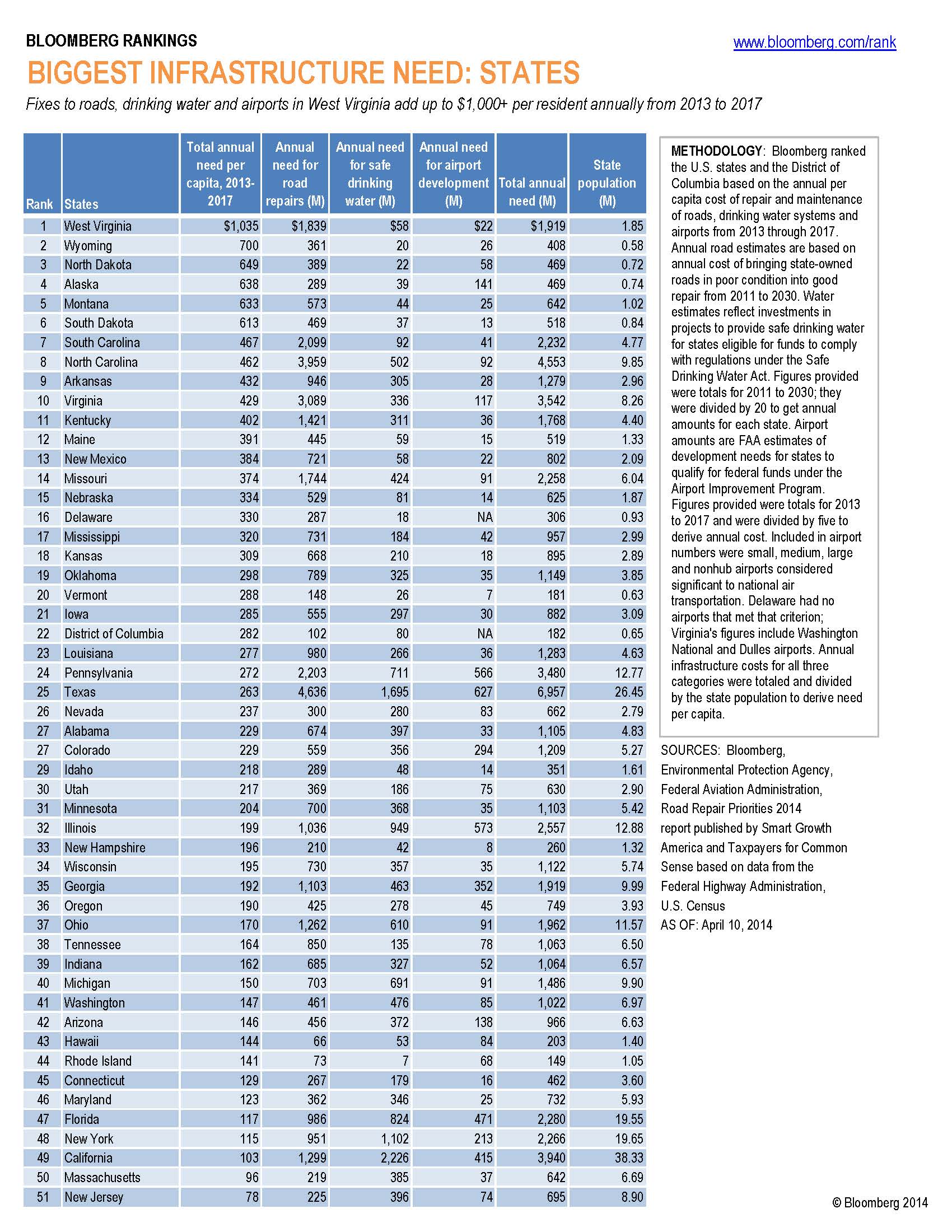
Tags: aviation, bill, infrastructure, rank, roads, water
1 Comment »
Georgia's Infrastructure Is On Our Mind
January 8th, 2014 | By: Infrastructure Report Card
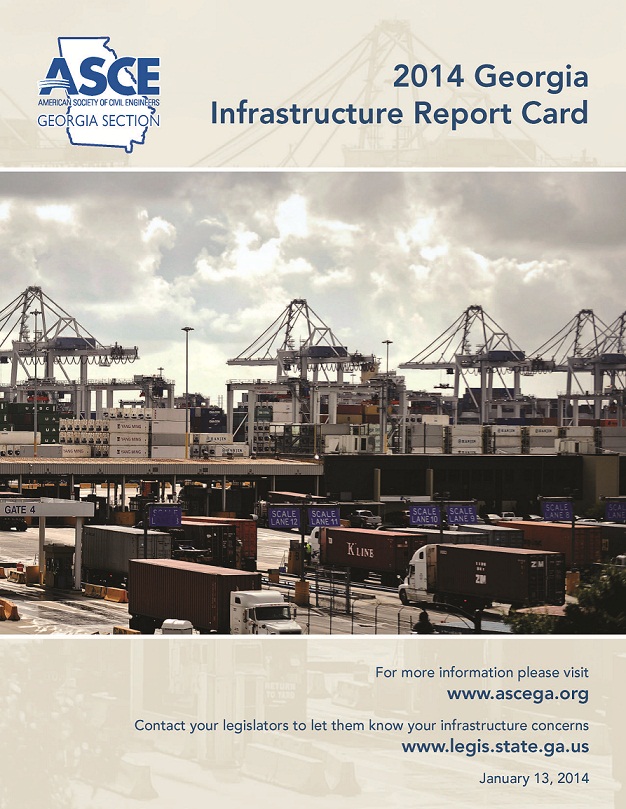 The 2014 Report Card for Georgia’s Infrastructure will be released next Monday, January 13th, in the South Wing of the State Capitol on the very first day day of Georgia’s legislative session. Highlighting the infrastructure needs across the state, the Report Card will provide a new GPA for Georgia’s infrastructure as well as new grades for specific areas — Aviation, Bridges, Dams, Drinking Water, Energy, Parks and Recreation, Ports (new), Rail (new), Roads, School Facilities, Solid Waste, Stormwater, Transit, and Wastewater.
Check back here on the 13th to find out what grades Georgia earned in the 2014 Report Card for Georgia’s Infrastructure! If you’re a supporter of Georgia’s infrastructure and in the Atlanta area, we invite you to join us for the Report Card release event:
WHAT: News conference for the release of the 2014 Report Card for Georgia’s Infrastructure
WHO: American Society of Civil Engineers, Georgia Section
Speakers: Georgia State Representative Ed Setzler
Kat Gurd, President of the Georgia Section of ASCE
Daniel Agramonte, Co-Chair of Report Card Committee
WHEN: Monday, January 13, 2014, 11:30 AM
WHERE: State Capitol South Wing
Georgia State Capitol Building
206 Washington St SW
Atlanta, Georgia 30334
WHY: Infrastructure has a direct impact on our lives every day—from the water we drink, to the schools our children attend and to the roads and rails we travel. Infrastructure is vital to our economy, security, recreation and safety. Will Georgia’s infrastructure systems make the grade?
The 2014 Report Card for Georgia’s Infrastructure will be released next Monday, January 13th, in the South Wing of the State Capitol on the very first day day of Georgia’s legislative session. Highlighting the infrastructure needs across the state, the Report Card will provide a new GPA for Georgia’s infrastructure as well as new grades for specific areas — Aviation, Bridges, Dams, Drinking Water, Energy, Parks and Recreation, Ports (new), Rail (new), Roads, School Facilities, Solid Waste, Stormwater, Transit, and Wastewater.
Check back here on the 13th to find out what grades Georgia earned in the 2014 Report Card for Georgia’s Infrastructure! If you’re a supporter of Georgia’s infrastructure and in the Atlanta area, we invite you to join us for the Report Card release event:
WHAT: News conference for the release of the 2014 Report Card for Georgia’s Infrastructure
WHO: American Society of Civil Engineers, Georgia Section
Speakers: Georgia State Representative Ed Setzler
Kat Gurd, President of the Georgia Section of ASCE
Daniel Agramonte, Co-Chair of Report Card Committee
WHEN: Monday, January 13, 2014, 11:30 AM
WHERE: State Capitol South Wing
Georgia State Capitol Building
206 Washington St SW
Atlanta, Georgia 30334
WHY: Infrastructure has a direct impact on our lives every day—from the water we drink, to the schools our children attend and to the roads and rails we travel. Infrastructure is vital to our economy, security, recreation and safety. Will Georgia’s infrastructure systems make the grade?
Tags: aviation, dams, Georgia, infrastructure, ports, roads, state, state report card, transit, water
No Comments »
Meet IP3, the New P3 Where Citizens Are the Owners
December 19th, 2013 | By: Infrastructure Report Card
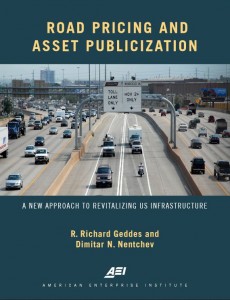 If you follow the infrastructure financing debate about how America is going to fund our future infrastructure needs, you have probably heard the term P3 or public-private partnership discussed as an innovative financing structure to utilize private investment in public infrastructure. However, with the release of the American Enterprise Institute’s new report, Road Pricing and Asset Publicization,” there is a new angle for the debate – the investment public-private partnership (IP3).
So what exactly is this IP3? Here’s how the report’s authors explain it: “The IP3 recognizes that you not the federal government or a private company—own roads that have already been built. And it offers you an annual payment for investing in them…. Under an IP3, a private company pays a public partner (like a state) a large upfront cash payment (called a concession) for the right to operate and collect toll revenue from an existing road network for a certain period of time. The IP3 locks away most of that concession payment—and most of the toll revenue—in a protected investment fund that pays an annual dividend to all households in the newly priced region. That helps offset the additional costs they will face from tolls, while recognizing that citizens are the true owners of the roads.”
America’s roads are definitely in need of repair so the more new ideas that are debated that’s all the better including P3s, gas tax changes and fixes, and all the others. While P3s are only one potential solution among the many, one thing is for certain – it’s time to start debating before the Highway Trust Fund is broke and many states lose half of their highway and bridge funding.
If you follow the infrastructure financing debate about how America is going to fund our future infrastructure needs, you have probably heard the term P3 or public-private partnership discussed as an innovative financing structure to utilize private investment in public infrastructure. However, with the release of the American Enterprise Institute’s new report, Road Pricing and Asset Publicization,” there is a new angle for the debate – the investment public-private partnership (IP3).
So what exactly is this IP3? Here’s how the report’s authors explain it: “The IP3 recognizes that you not the federal government or a private company—own roads that have already been built. And it offers you an annual payment for investing in them…. Under an IP3, a private company pays a public partner (like a state) a large upfront cash payment (called a concession) for the right to operate and collect toll revenue from an existing road network for a certain period of time. The IP3 locks away most of that concession payment—and most of the toll revenue—in a protected investment fund that pays an annual dividend to all households in the newly priced region. That helps offset the additional costs they will face from tolls, while recognizing that citizens are the true owners of the roads.”
America’s roads are definitely in need of repair so the more new ideas that are debated that’s all the better including P3s, gas tax changes and fixes, and all the others. While P3s are only one potential solution among the many, one thing is for certain – it’s time to start debating before the Highway Trust Fund is broke and many states lose half of their highway and bridge funding.
Tags: bridges, infrastructure, infrastructure report card, P3, roads, surface transportation, transportation
1 Comment »
The Countdown Begins – Our Federal Funding for Transportation May Run Dry Next Year
December 18th, 2013 | By: America's Infrastructure Report Card
Transportation is a key issue in 2014 as the Highway Trust Fund will be insolvent by 2015 and MAP-21 is set to expire in September. In some states, transportation projects are already being put on hold because of the uncertainty of future federal funding. The UPDATE Act introduced by Rep. Earl Blumenauer (D-OR) is just one of several current proposals regarding infrastructure funding supported by ASCE. To date, the motor fuels user fee (gas tax) has proven to be an efficient, reliable, and fair method of funding our nation’s surface transportation programs. At present, the federal motor fuels tax generates revenues that are reserved for investment in highway and public transportation improvements through the Highway Trust Fund. However, the 18.4 cents per gallon federal gas tax has not been adjusted since 1993 and has lost one-third of its purchasing power over the last 17 years. According to the Consumer Price Index, the costs of many household items have nearly doubled over the last 20 years. Some examples include:- A loaf of bread: 1993: $0.75, 2013: $1.41
- A pound of coffee: 1993: $2.50, 2013: $5.21
- A new car: 1993: $12,750, 2013: $31,252
Tags: bridges, congress, gas tax, highway trust fund, roads
No Comments »



 */ ?>
*/ ?>













